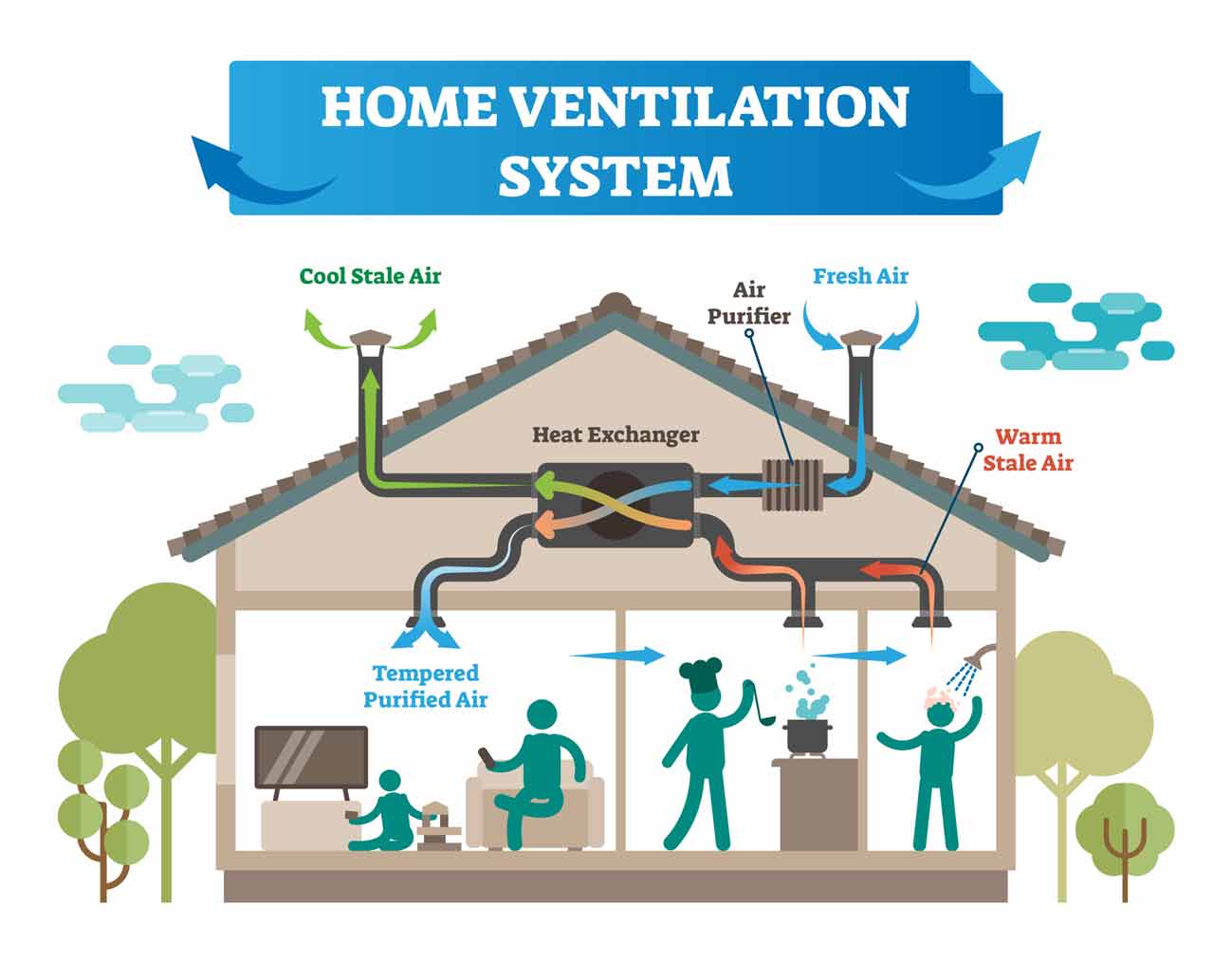Discovering the Advantages of Heat Recovery Ventilation for Power Effectiveness in Houses
Heat Recovery Ventilation (HRV) systems provide property owners a functional method to enhancing energy effectiveness. By reclaiming warm from outward bound air, these systems can considerably reduce heating & cooling prices. In addition, they give a constant supply of fresh air, boosting indoor air high quality and comfort degrees. As property owners take into consideration lasting choices, comprehending the nuances of HRV systems ends up being increasingly crucial. What elements should one examine before making such an investment?
Understanding Heat Recovery Ventilation Systems

How HRV Improves Indoor Air Quality

Power Financial Savings: The Financial Benefits of HRV
Making best use of energy efficiency, heat recovery ventilation (HRV) systems use substantial economic advantages for home owners. By recouping and reusing warm from exhaust air, HRVs considerably decrease heating & cooling costs. This technology can lead to energy savings of approximately 30%, relying on environment and usage patterns. Property owners typically discover minimized utility costs quickly after setup, making HRVs an economically wise financial investment over time. Additionally, several regions give incentives or refunds for energy-efficient upgrades, further improving the economic allure. As energy costs remain to climb, the cost-effectiveness of HRVs ends up being increasingly clear. On the whole, the incorporation of HRV systems not just advertises power effectiveness however likewise contributes to long-lasting monetary savings for houses.
The Ecological Impact of Heat Recovery Ventilation
A substantial ecological benefit of heat recovery ventilation (HRV) systems depends on their ability to lower overall energy consumption. By recovering heat site web from exhaust air and moving it to inbound fresh air, HRV systems reduce the demand for energy-intensive home heating and cooling down methods. This reduction in power need adds to decrease greenhouse gas discharges, as less fossil gas is required to preserve comfy interior temperatures. Additionally, HRV systems boost indoor air quality by effectively trading stagnant air with fresh exterior air, lowering dependence on mechanical air conditioning systems that can harm the setting. Overall, the implementation of HRV systems supports sustainable living methods and lines up with worldwide initiatives to battle environment change by promoting power efficiency in domestic settings.
Selecting the Right HRV System for Your Home
Exactly how can home owners assure they select the right heat recovery ventilation (HRV) system for their needs? They must examine their home's dimension and design, as these elements affect air movement requirements. Next off, assessing the system's efficiency rankings is vital, as higher ratings show much better efficiency and power savings. Homeowners must additionally think about installment and maintenance prices, comparing various brand names and versions for worth. In addition, it is very important to evaluate sound degrees, as some systems run more silently than others. Consulting with cooling and heating experts can give customized suggestions based upon particular home conditions. Examining customer testimonials and service warranties can help in making an informed decision, guaranteeing that the picked HRV system properly enhances indoor air high quality and power performance.
Frequently Asked Inquiries

Exactly how Often Should I Tidy or Keep My HRV System?
The regularity of cleansing or preserving a warm recovery air flow (HRV) system usually relies on use and environmental variables. Typically, it is suggested to you can try here do upkeep every six months to guarantee peak efficiency and air quality.

Can HRV Solutions Help In Reducing Moisture Levels Inside?
HRV systems can effectively minimize indoor humidity degrees by trading stale, damp air with fresh, drier air from outdoors. HRV Heat Recovery Ventilation. This procedure assists keep a well balanced indoor environment, improving convenience and avoiding moisture-related problems
What Is the Life expectancy of a Normal HRV System?
The life-span of a common heat recovery ventilation (HRV) system varies, typically lasting between 10 to 15 years. Regular upkeep can expand its efficiency and operational life, making sure peak efficiency throughout its use duration.
Are There Any Kind Of Noise Worry About HRV Solutions?
Sound issues with HRV systems can occur, especially from fan procedure. Nonetheless, numerous modern devices are made to decrease audio levels, ensuring they operate quietly while keeping performance, which attends to possible disturbances in living atmospheres.
Can I Install an HRV System Myself, or Do I Need a Professional?
The individual contemplated whether to set up the heat recovery ventilation (HRV) system personally or hire a professional. Generally, while do it yourself setup is possible, expertise warranties why not try these out correct performance and compliance with regional building codes, boosting system effectiveness.